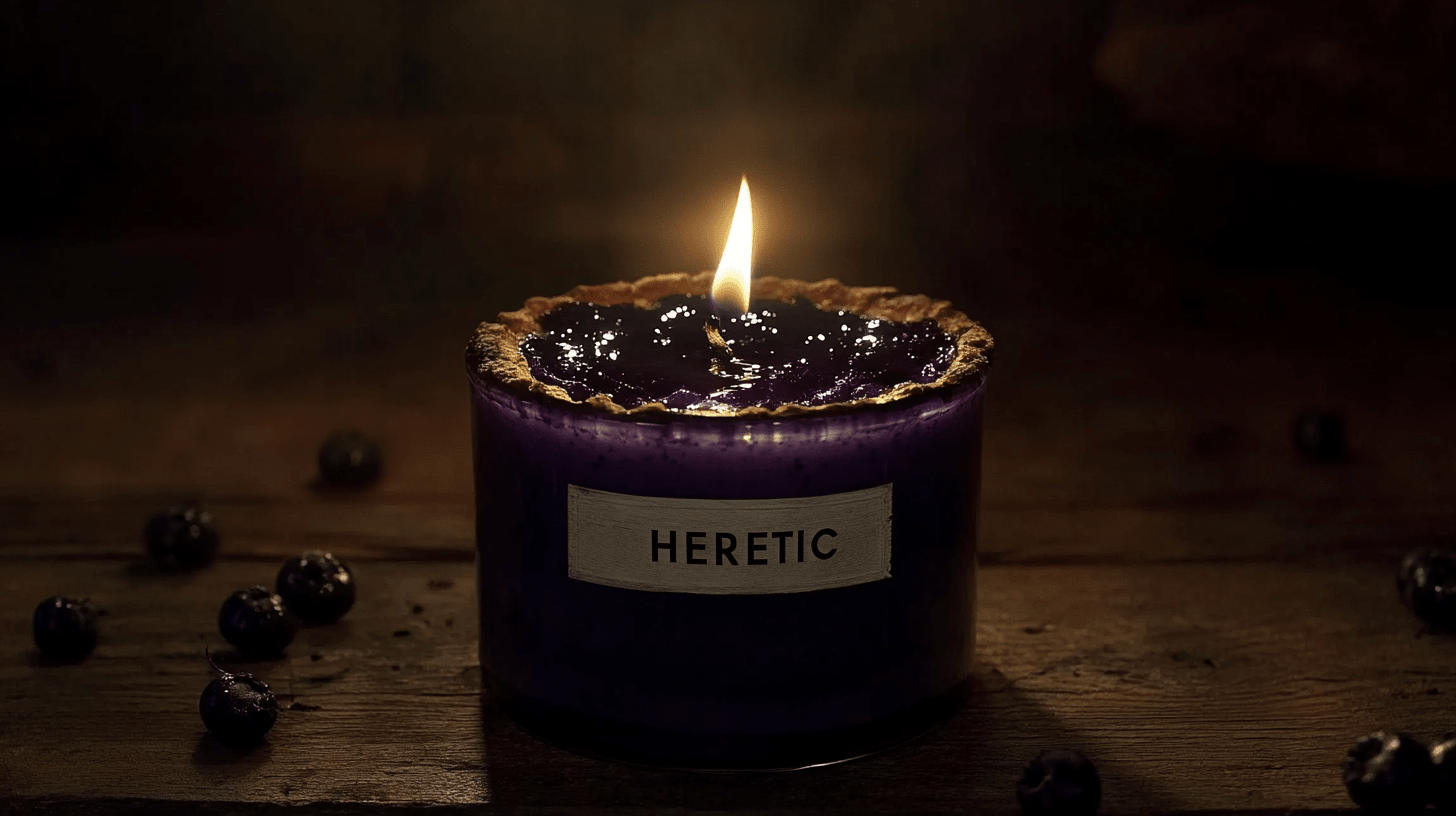What's After the Blog?
Explained
Unraveling 'Heretic' (2024): A Deep Dive into Its Complex Themes and Ending
Dive into the intricate themes and thought-provoking ending of 'Heretic.' From faith and manipulation to personal agency, we unravel what makes this psychological thriller stand out.
November 18, 2024

Movies mentioned in this article
Unraveling Heretic (2024): A Deep Dive into Its Complex Themes and Ending
“Is there a God? Is there an afterlife? What happens when we die?” These existential questions form the backbone of Heretic (2024), a psychological thriller that challenges perceptions of faith, reality, and control. Directed by Scott Beck and Bryan Woods—the creative duo behind A Quiet Place—the film stars Hugh Grant in a role that subverts his quintessential charm for something far more sinister.
In this comprehensive analysis, we’ll delve into the intricate layers of Heretic, exploring its complex themes and unpacking its thought-provoking ending. Whether you’re a fan of psychological horror or seeking to understand the film’s deeper meanings, this guide is for you.
For an in-depth movie summary, engaging quizzes, and links to other movie information providers, visit What’s After the Movie’s dedicated page for Heretic.
A Detailed Plot Overview
Introduction to the Characters
Sister Paxton (Chloe East) and Sister Barnes (Sophie Thatcher) are young Mormon missionaries stationed in Colorado. Paxton is earnest and somewhat naive, while Barnes is seasoned and resolute. Tasked with spreading their faith, they embark on door-to-door visits, sharing the teachings of the Church of Jesus Christ of Latter-day Saints.
The Fateful Meeting with Mr. Reed
On a gloomy afternoon, the sisters arrive at the home of Mr. Reed (Hugh Grant), a seemingly amiable Englishman. He invites them inside, assuring them that his wife is baking a blueberry pie—a comforting gesture that eases their initial hesitation. According to their protocol, they shouldn’t enter a home without another woman present, but the prospect of warmth and hospitality sways them.
The Conversation Turns Philosophical
Once inside, Mr. Reed engages the sisters in a dialogue that begins innocuously but soon delves into deeper philosophical territory. He questions the nature of religion, drawing parallels between various faiths and suggesting that all religions are iterations of one another. He uses analogies from popular culture—like comparing religions to different versions of Monopoly or referencing Star Wars and Radiohead—to illustrate his points.
Subtle Hints of Danger
As the conversation progresses, subtle anomalies begin to unsettle the sisters:
- The Blueberry Pie Deception: The enticing aroma is revealed to be from a scented candle, not an actual pie.
- The Missing Wife: There’s no sign of Mrs. Reed anywhere in the house.
- Locked Doors: The front door, which should be unlocked, is mysteriously secured from the inside.
These red flags hint that Mr. Reed might not be the congenial host he appears to be.
The Illusion of Choice: Belief vs. Disbelief
Mr. Reed presents the sisters with a perplexing choice between two doors labeled “Belief” and “Disbelief.” He challenges them to choose a path that aligns with their convictions. Sister Barnes, firm in her faith, insists on the “Belief” door, hoping their commitment will lead them to safety.
However, both doors lead to the same destination: a labyrinthine basement that feels more like a dungeon. It’s clear that Mr. Reed has engineered this scenario to trap them, turning their faith into a psychological weapon against them.
The Encounter with the Prophet
In the depths of the basement, the sisters meet a frail, sickly woman introduced by Mr. Reed as a prophet capable of performing miracles. He feeds her a slice of blueberry pie, nonchalantly revealing it’s poisoned. The woman collapses, and Mr. Reed calmly assures the horrified sisters that she will resurrect, offering insights from the afterlife.
A Distracted Moment and a Resurrection
An unexpected distraction occurs when a Mormon elder arrives at the house, searching for the missing sisters. Mr. Reed deftly dismisses him, and the opportunity for rescue slips away. Returning to the basement, the sisters witness the prophet’s seemingly miraculous resurrection. She describes ethereal visions but cryptically whispers, “It’s not real.”
Unraveling Mr. Reed’s Deceptions
Sister Barnes suspects foul play, theorizing that the resurrection was staged. She formulates a plan to confront Mr. Reed, but their attempt backfires disastrously. Anticipating their move, Mr. Reed slashes Barnes’s throat, leaving Paxton isolated and terrified.
He then tries to manipulate Paxton further, extracting a small metal rod from Barnes’s arm, claiming it’s a microchip that proves they live in a simulated reality. Paxton recognizes it as a birth control implant, exposing his lies.
The Hidden Horrors Beneath
Determined to uncover the truth, Paxton delves deeper into the basement. She discovers a hidden tunnel leading to a chamber filled with caged women, all emaciated and despondent. These are previous victims, ensnared by Mr. Reed’s twisted games.
The Revelation of Control
Confronting Mr. Reed, Paxton accuses him of orchestrating everything to assert control over others. He reveals that his one true belief is in control as the ultimate religion. His elaborate traps and psychological manipulations are designed to break people’s spirits and bend them to his will.
The Climactic Struggle
A violent confrontation ensues. Paxton, using a letter opener previously hidden by Barnes, stabs Mr. Reed. Wounded but not defeated, he retaliates, stabbing Paxton in return. As he prepares to deliver the final blow, a gravely injured Barnes musters her remaining strength to strike Mr. Reed from behind, killing him.
Barnes succumbs to her wounds, and a battered Paxton escapes the nightmarish house, emerging into the cold embrace of the snowy landscape.
Exploring the Complex Themes
Heretic weaves a tapestry of themes that challenge the viewer’s perceptions and provoke introspection.
Faith vs. Skepticism
The film juxtaposes the steadfast faith of the sisters against Mr. Reed’s cynical skepticism. He systematically deconstructs their beliefs, using intellectual arguments and manipulative tactics to undermine their convictions.
- Sister Paxton represents innocence and unwavering faith, even in the face of overwhelming adversity.
- Sister Barnes embodies resilience and critical thinking, willing to question and confront when necessary.
- Mr. Reed personifies skepticism taken to a manipulative extreme, using doubt as a weapon.
The Nature of Control
Control emerges as a central theme, portrayed as a corrupting force that can become a belief system in its own right.
- Mr. Reed’s Obsession: His desire to dominate others is his ultimate “religion,” reflecting a twisted need for power.
- Manipulation as a Tool: He creates elaborate scenarios to manipulate his victims, stripping them of agency.
- Resistance and Autonomy: The sisters’ struggle represents the fight to maintain autonomy in the face of oppressive control.
Reality vs. Illusion
The film blurs the boundaries between what’s real and what’s fabricated, leaving characters and viewers alike questioning their perceptions.
- Staged Miracles: The false resurrection challenges the sisters’ beliefs and forces them to discern truth from deception.
- Simulated Reality: Mr. Reed’s claim of a simulated world introduces existential doubt.
- The Ambiguous Ending: The final scenes leave room for interpretation, reinforcing the theme of uncertain reality.
Unpacking the Ambiguous Ending
The conclusion of Heretic is intentionally open-ended, prompting viewers to draw their own conclusions.
The Butterfly: A Symbolic Gesture
As Paxton escapes, a butterfly lands on her hand, only to vanish moments later. This imagery is rich with symbolic meaning:
- Rebirth and Transformation: The butterfly can represent Paxton’s transformation after surviving her ordeal.
- Connection to the Afterlife: Earlier, Paxton expressed a desire to return as a butterfly to signal her presence to loved ones from beyond.
- Hallucination vs. Reality: The fleeting nature of the butterfly raises the question of whether it was real or a figment of her imagination.
Interpreting the Final Moments
Several interpretations can be drawn from the ending:
- Survival and Resilience: Paxton’s emergence into the snowy landscape signifies survival against all odds.
- Spiritual Affirmation: The butterfly may symbolize a spiritual confirmation of her faith.
- Psychological Trauma: The ambiguous imagery could reflect the psychological impact of her traumatic experience.
Open Questions
The film leaves viewers pondering:
- Did Paxton truly escape, or is she in a metaphorical purgatory?
- Was the butterfly a sign from Barnes, or a hallucination stemming from trauma?
- Does the ending affirm faith, or highlight the fragility of reality?
The Performances That Brought Heretic to Life
Hugh Grant as Mr. Reed
Hugh Grant delivers a chilling performance, shedding his typical romantic-comedy persona for a role that is both intellectual and menacing. His portrayal adds depth to Mr. Reed, making him a complex antagonist whose charm masks a sinister agenda.
Chloe East as Sister Paxton
Chloe East embodies the innocence and vulnerability of Sister Paxton. Her journey from naivety to empowerment is compelling, capturing the character’s internal struggle and ultimate resilience.
Sophie Thatcher as Sister Barnes
Sophie Thatcher’s portrayal of Sister Barnes provides a strong counterbalance to Paxton. She is pragmatic and courageous, her skepticism serving as a catalyst for challenging Mr. Reed’s manipulations.
Critical Reception and Reviews
Heretic has generated significant discussion for its bold themes and unconventional narrative structure.
- Praise: Critics have lauded the film for its performances, especially Grant’s transformative role, and its thought-provoking exploration of complex themes.
- Criticism: Some viewers find the ambiguity challenging, desiring more concrete resolutions.
- Overall Impact: The film stands out in the psychological thriller genre for its willingness to delve into philosophical questions without providing easy answers.
For more insights and audience reactions, explore these resources:
- Metacritic: Heretic on Metacritic
- Rotten Tomatoes: Heretic on Rotten Tomatoes
- IMDb: Heretic on IMDb
- The Movie Database (TMDB): Heretic on TMDB
- JustWatch: Where to Stream Heretic
- Box Office Mojo: Heretic Box Office Details
- Wikipedia: Heretic on Wikipedia
Explore More on What’s After the Movie
At What’s After the Movie, we enhance your cinematic experience with a variety of features:
- Detailed Summaries: Dive deeper into the plots of your favorite films.
- Engaging Quizzes: Test your knowledge and challenge your friends.
- Insightful Analyses: Read expert takes on themes, symbolism, and more.
- Community Interaction: Join discussions and share your interpretations.
Visit our dedicated page for Heretic at whatsafterthemovie.com/movies/heretic to explore these features and more.
Conclusion
Heretic (2024) is a film that doesn’t just entertain—it provokes, challenges, and lingers in the mind long after the credits roll. Its exploration of faith, control, and the blurred lines between reality and illusion invites viewers to reflect on their own beliefs and perceptions.
Whether you see the butterfly as a symbol of hope, a figment of a traumatized mind, or a message from beyond, one thing is certain: Heretic leaves a lasting impression, making it a significant entry in contemporary psychological thrillers.
Continue reading

What's After the Movie?
Not sure whether to stay after the credits? Find out!
Check out our other apps:
Actors
Companies
Latest Movies
© 2025 What's After the Movie. All rights reserved.





